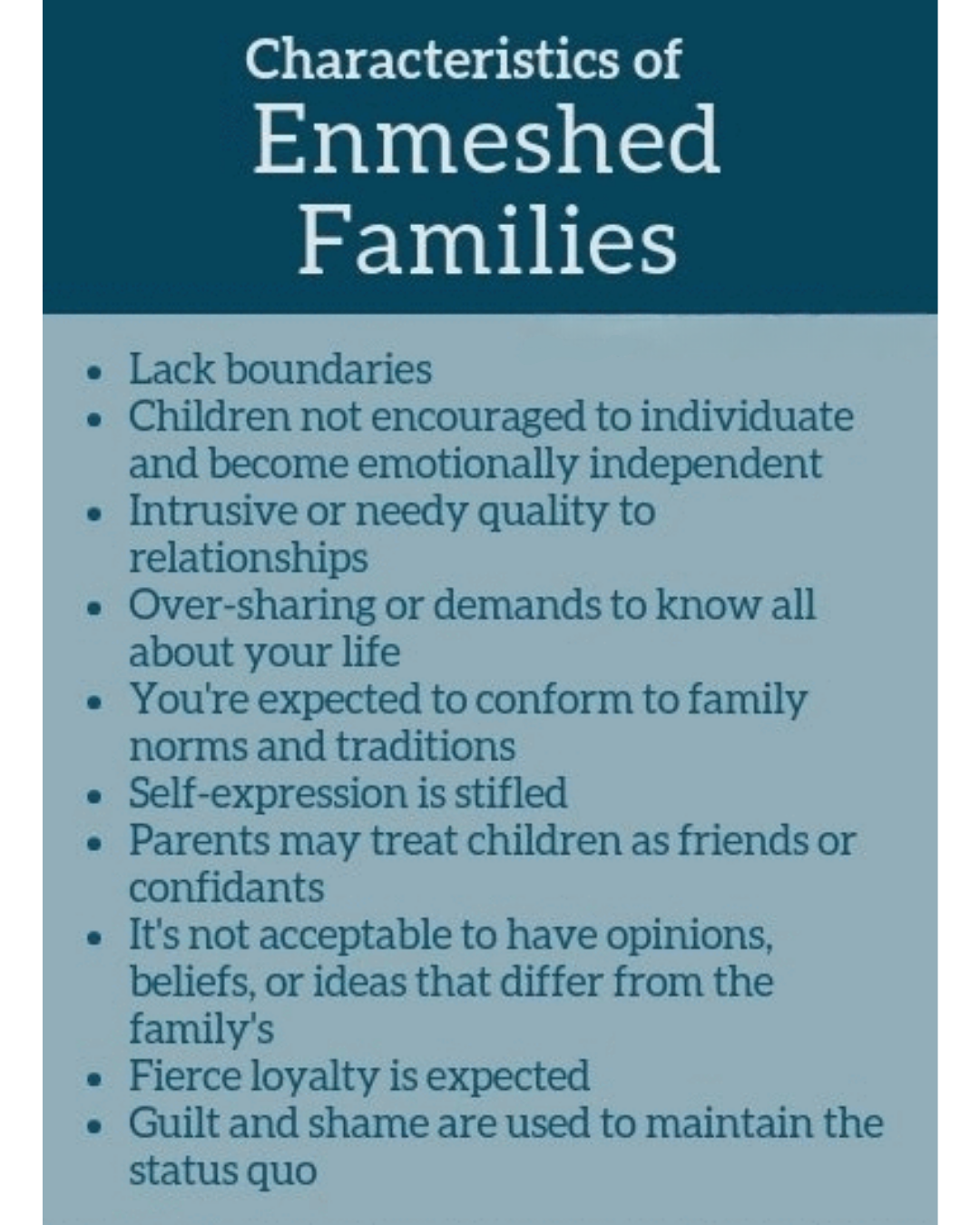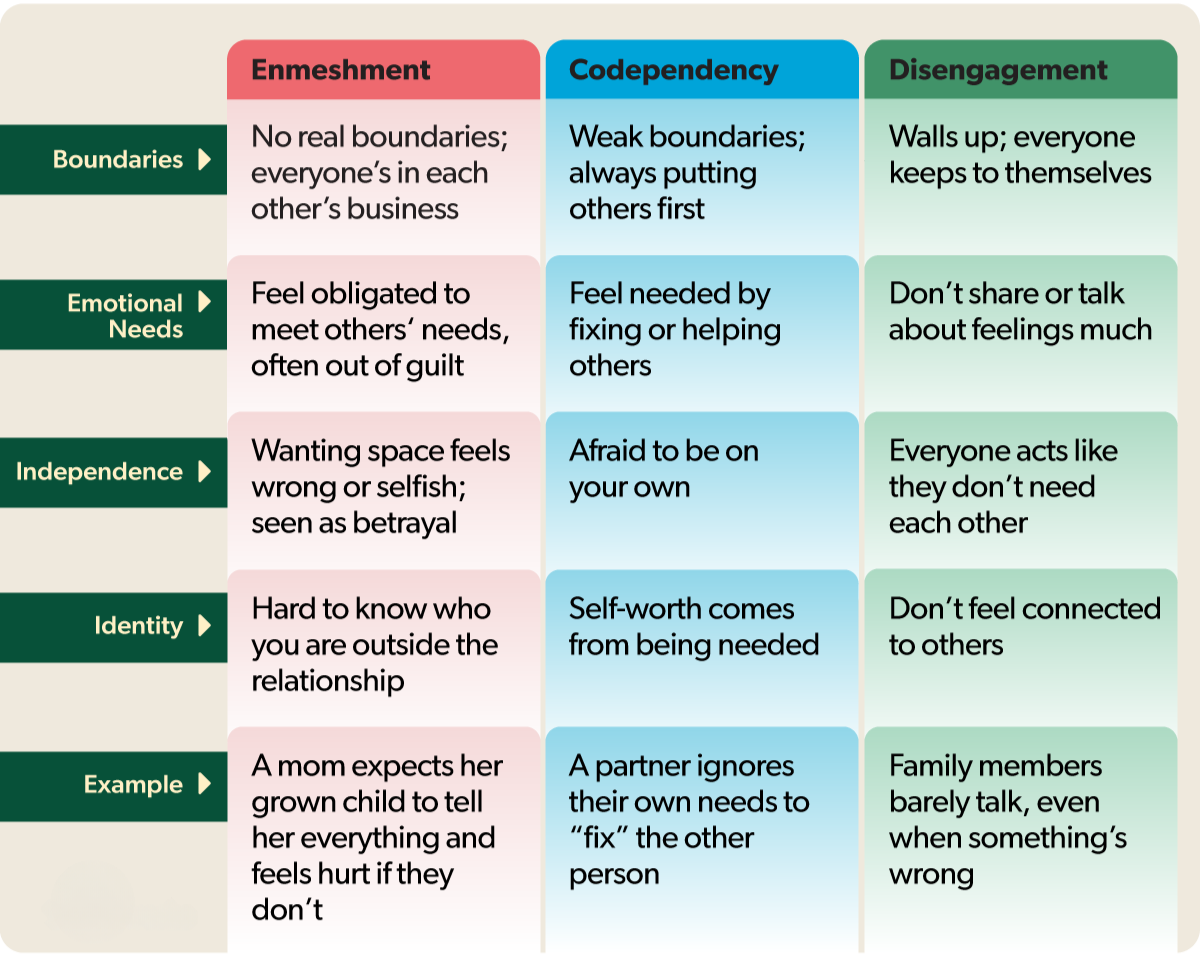By Carolyn Riviere, LMFT, Certified Sex Therapist, Trauma Specialist
In my work with couples, one issue that surfaces more than I ever expected is the enmeshment and boundary crossings that in-laws perpetuate on their adult children. Most often, it is usually the husband’s mother and father, infringing on the non-biological spouse. I call these, in-law boundary violation. Young and old couples frequently walk into my office feeling frustrated, torn, and emotionally exhausted. One partner might say, “My parents are just trying to help,” “I am caught in the middle of my wife and parents,” “my parents mean no harm, they love us.” These violations personally and physically distant and tear apart a new family system and lead to discussions of divorce, isolation, and hopelessness. When these behaviors happen in the adult child’s own home, the result is losing the safe haven of their own surroundings and home environment, leaving the spouse feeling undermined, invaded, or infantilized. In addition, the boundary abused spouse potentially starts feeling “un-defended and isolated” from her partner.
This isn’t just about whose holiday traditions win out or how many unannounced visits happen in a month. It’s about autonomy, identity, and the right to form a separate, nuclear family unit. When boundaries are unclear, or worse, consistently crossed, it can damage the couple’s connection, trigger trauma responses, and perpetuate dysfunctional patterns for generations. Not only are they hurting and attacking their own children, but affecting and cutting off relationships with grandchildren.
Why does this behavior happen? What is going on in this family system that grandparents and in-laws would seemingly forge direct attacks or passive-aggressive statements on their child’s own family? Let’s break this down: what’s actually going on, why it matters, and how couples can begin to heal.
Understanding Enmeshment and Boundary Infringement
Enmeshment is when personal boundaries are diffused, and individual identities become entangled. In enmeshed families, loyalty and closeness are prioritized to the point where autonomy is sacrificed. According to Salvador Minuchin, the founder of structural family therapy, enmeshment disrupts healthy relational structures and stunts emotional growth1.
In the context of in-laws, this might look like a mother who calls her son multiple times a day for emotional support, asking him to “come over and fix something at all hours of the night,” undermining his partner. Or a father-in-law who constantly questions the couple’s decisions on parenting, finances, or religion, framing it as “just looking out for them.”
These interactions may seem well-intentioned, but they create triangulation—a dysfunctional relational pattern where a third party (the in-law) is inserted into the couple’s relationship dynamic. Over time, this erodes trust and emotional safety. The non-biological spouse is often targeted, set aside, again, even in her own home. If the partner (husband) does not defend or set boundaries with his parents, the marriage can begin to erode, trust is broken, and the partner can be left in a state of isolation/anger, even in their own home.
Why It Hits Harder for Young Couples
Young couples are in a critical developmental stage. They’re not just merging lives; they’re building a shared identity. Research shows that establishing a strong “couple bubble” early in a relationship is key to long-term satisfaction 2.
When in-laws dominate space emotionally or physically, they interrupt this bonding process. What may look like tension between spouses is often a symptom of an external boundary violation that hasn’t been addressed directly. To the partner of the infringing parents, this can feel normal; it’s how they grew up. They are used to their parents being enmeshed in his life. To the outside spouse, this causes havoc: why is my husband not choosing me over his parents? Why isn’t he defending me? All of these statements couples and individuals have expressed during sessions.
This hits especially hard when unresolved trauma is in play. If one partner grew up in a household where boundaries were routinely ignored, they may struggle to recognize enmeshment or feel immense guilt at the idea of asserting themselves.
Signs, Behaviors, and Manipulation Due to Unhealthy In-Law Dynamics
- Frequent emotional manipulation or guilt-tripping
- In-laws expecting to be prioritized over the spouse
- One partner defending toxic behavior to “keep the peace”
- Chronic secrecy or triangulation (e.g., venting to in-laws about marital issues)
- Feelings of resentment, emotional burnout, or role confusion
Steps to Heal and Reclaim Your Family System Autonomy

Acknowledge and Name What Is Taking Place for All Involved
Awareness and acceptance by both partners is the first step. The most important person to validate the other spouse is the partner whose parents are crossing the lines. Couples must recognize the dynamic for what it is: not simply family tension, but a breakdown in boundaries that requires intentional repair. Normalize the discomfort. You’re not failing as a spouse or child—you’re trying to rewire a family system that benefits from the status quo. You (the child of the adult parents who are enmeshed) grew up in this dynamic, but your spouse did not, nor did they agree to be in an enmeshed marriage. They married YOU.
1. Clarify the Couple’s “We”
Therapist Stan Tatkin emphasizes creating a “couple bubble” where both partners agree that the relationship comes first. Discuss shared values, communication rules, and what support from extended family should look like. This is the pathway to healing the marriage, setting clear boundaries, and delivering the message to the “parents.”
2. Set and Hold Boundaries
This step can be terrifying, especially if guilt or cultural expectations are in play. Boundaries might include:
- No drop-ins without notice
- Not discussing the relationship with parents
- Choosing to spend holidays based on mutual preference, not obligation
Boundaries need to be communicated calmly but firmly. It may help to script these in therapy beforehand to avoid reactive conversations. I have even had generational therapy sessions when the older couple is completely unaware and remorseful.
3. Support the Partner Caught in the Middle
The partner whose family is overstepping must take the lead in addressing the issue. This shows alignment and solidarity. That doesn’t mean attacking their family, but rather reinforcing the boundary: “I love you, and I want a relationship with you, but I’m prioritizing my marriage.”
4. Address Trauma Responses
If either partner experiences intense anxiety, shame, or dissociation when setting boundaries, it could be linked to early attachment trauma. A trauma-informed therapist can help unpack these responses and develop nervous system regulation strategies.
5. Engage in Couple and/or Family Therapy
Sometimes, the in-laws can be invited to a structured session to discuss new relational norms. More often, couples need their own space to build tools, process grief, and untangle years of generational conditioning.
In some families and cultures, enmeshment isn’t just common—it’s expected. Multigenerational living, shared finances, and interdependence are normalized. That doesn’t make the pain of boundary violations less real.
Therapy doesn’t aim to Westernize or individualize everyone’s family values. It seeks to help each couple define what safety, respect, and autonomy look like for them, within their cultural framework.

Final Thoughts: Boundaries Are a Form of Love
Setting boundaries with in-laws isn’t rejection of your family system. It’s restructuring. It says, “We want a relationship with you, but not at the expense of our marriage.” For couples navigating this difficult terrain, know this: you are not alone, you are not broken, and it is possible to love your family while protecting your partnership. It actually is the only option. The newly formed, Nuclear family has to be prioritized.
As a therapist, I see healing happen when couples turn toward each other with honesty and grit. When they stop trying to please everyone and start honoring their “we.”
And that’s the beginning of real change. I believe it will make your marriage more intimate, secure, and safe for all involved.
References:
If you’re facing these challenges, reach out. Therapy isn’t about fixing what’s broken—it’s about creating space for something stronger to grow.

